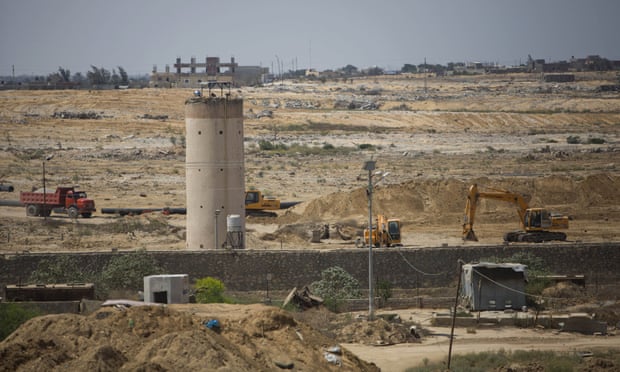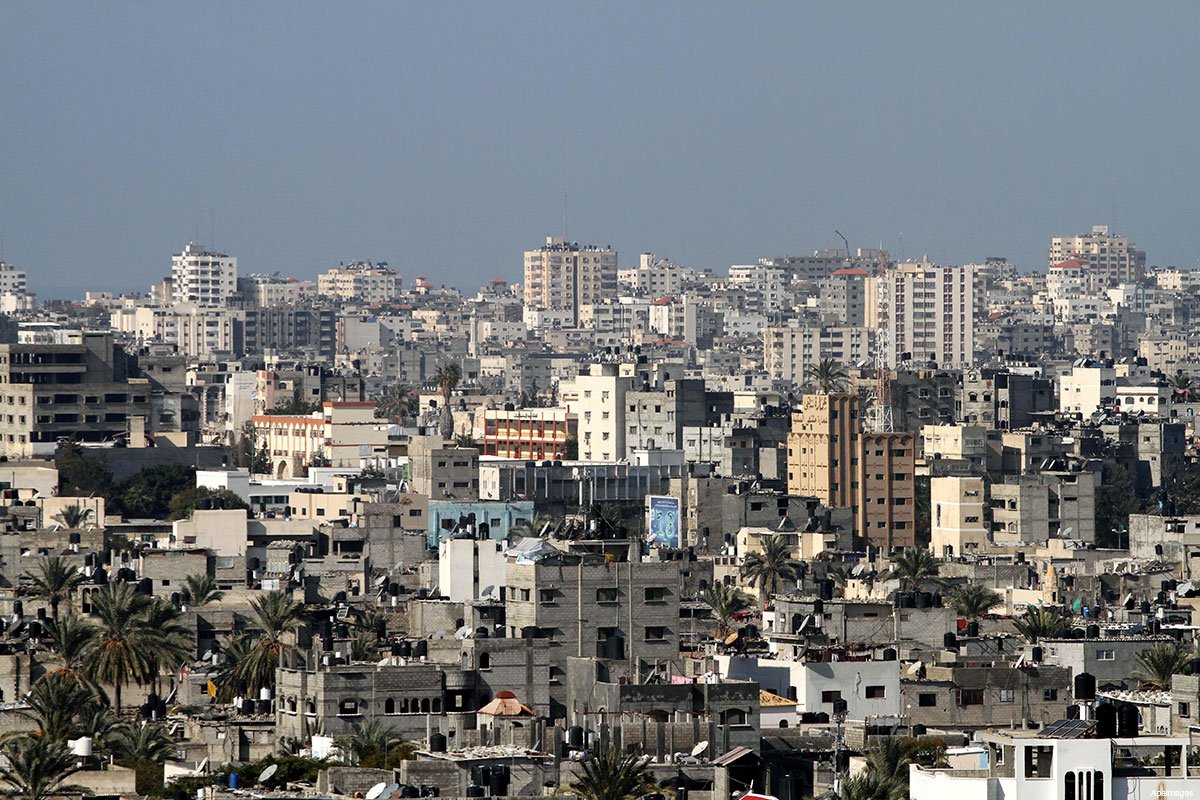Gaza Could Become 'Uninhabitable' by 2020, UN Report Warns
 Wednesday, September 2, 2015 at 08:59PM
Wednesday, September 2, 2015 at 08:59PM http://www.haaretz.com/news/middle-east/1.674064
Eight years of economic blockade and three wars with Israel in six years accelerated de-development of Gaza Strip, UN Conference on Trade and Development report says.
by Associated Press 2 September 2015 Haaretz
 Palestinian workers remove the rubble of a building that was destroyed during the war, on August 25, 2015 in Gaza City's suburb of Shujaiyeh.AFP
Palestinian workers remove the rubble of a building that was destroyed during the war, on August 25, 2015 in Gaza City's suburb of Shujaiyeh.AFP
A new United Nations report says Gaza could be "uninhabitable" in less than five years if current economic trends continue.
The report released Tuesday by the UN Conference on Trade and Development points to the eight years of economic blockade of Gaza as well as the three wars between Israel and the Palestinians there over the past six years.
Last year's war displaced half a million people and left parts of Gaza destroyed.
The war "has effectively eliminated what was left of the middle class, sending almost all of the population into destitution and dependence on international humanitarian aid," the new report says.
Gaza's GDP dropped 15 percent last year, and unemployment reached a record high of 44 percent. Seventy-two percent of households are food insecure.
The wars have shattered Gaza's ability to export and produce for the domestic market and left no time for reconstruction, the report says. It notes that Gaza's "de-development," or development in reverse, has been accelerated.
Israel and Egypt have maintained a blockade of Gaza since the Islamic militant group Hamas seized control of the territory in 2007.
The report comes as Egyptian military bulldozers press ahead with a project that effectively would fill Egypt's border with the Gaza Strip with water and flood the last remaining cross-border underground smuggling tunnels, which have brought both commercial items and weapons into Gaza.
The report calls the economic prospects for 2015 for the Palestinian territories "bleak" because of the unstable political situation, reduced aid and the slow pace of reconstruction.
*********************************************************************************
see also article from the Guardian:

https://www.middleeastmonitor.com/blogs/politics/20792-what-can-be-gone-to-save-the-people-of-gaza
What can be done to save the people of Gaza?
by Samira Shackle 2 September 2015 Middle East Monitor
 general view of
general view of
The Gaza Strip is a tiny patch of land - just 362 square kilometres (225 square miles) - that is currently home to around 1.8 million Palestinians. It has one of the highest population densities in the world, and the figure is increasing all the time. The population is expected to grow to 2.1 million by 2020.
Sandwiched between Israel, Egypt and the Mediterranean Sea, over the last decade Gaza has been ravaged by multiple wars and a continued economic blockade. This has had major consequences. A new report from the UN Conference on Trade and Development warns that Gaza could become uninhabitable by 2020 if current economic and population trends continue.
The report cites the “de-development” of Gaza. This term is fairly self-explanatory. It describes a process where development is actively reversed, rather than just failing to move forward. This is the result of the eight-year blockade by Israel and Egypt which began after Hamas took control of Gaza in 2007, but is also caused by the three wars which Israel has waged on the enclaved over the last six years. The two feed into each other; the blockade prevents essential building materials from getting through in order to complete post-conflict reconstruction.
The report notes that the blockade has “ravaged the already debilitated infrastructure of Gaza, shattered its productive base, left no time for meaningful reconstruction or economic recovery and impoverished the Palestinian population in Gaza, rendering their economic wellbeing worse than the level of two decades previous.” Poor governance by the Hamas administration is highlighted as another major problem for the economy.
The most recent war in the summer of 2014 has had a profound effect. The Israeli offensive in Gaza left more than 2,260 Palestinians dead, more than 11,000 injured, and around 500,000 displaced. Of those, 100,000 people are still homeless. More than 18,000 buildings – including homes, hospitals and other facilities – were destroyed. Infrastructure suffered severely: up to 247 factories and 300 commercial centres were fully or partially destroyed. Gaza’s only power station sustained severe damage. Overall, the territory’s GDP dropped by 15 per cent in 2014, and unemployment reached a record high of 44 per cent; the highest rate of anywhere in the world.
This was not an economy that was equipped to cope with such wide scale destruction; the war compounded an already dire socio-economic situation. According to the report, the 2014 war “effectively eliminated what was left of the middle class, sending almost all of the population into destitution and dependence on international humanitarian aid.” Today, 72 per cent of households in Gaza are food insecure. Less than two per cent of the building materials required for reconstruction have been allowed into Gaza since the war ended over a year ago.
This is not the first time that the UN has highlighted the process of de-development in Gaza. The issue has come up after all three of the wars on Gaza over the last six years. Notably, in 2012, UNRWA warned that Gaza would become unliveable by 2020, citing limits in the supply of water and electricity. This week’s report, issuing the same hopeless forecast, follows warnings by other international institutions. In May, the World Bank said that the Israeli and Egyptian blockades, in conjunction with war and poor governance, were strangling Gaza’s economy.
The problems then are well documented. But what can be done? The report notes that aid from international donors remains essential, but is not the answer: “Short of ending the blockade, donor aid... will not reverse the ongoing de-development and impoverishment in Gaza.” Yet there is little, if any, meaningful international pressure on Israel or Egypt to end the blockade. The report was published as Egyptian military bulldozers pressed ahead with a project that would fill Egypt’s border with Gaza with water, in order to flood the last remaining cross-border underground smuggling tunnels. Egypt had already blown up many of these tunnels, which are used to transport weapons – but also commercial items and basic supplies. They were the Gaza Strip’s lifeline.
There is no evidence for the efficacy of the blockade. Earlier this month, a report by the International Crisis Group argued that “the policies of isolating Hamas and blockading Gaza have neither brought a political settlement closer nor dislodged Hamas. There is no reason to believe that their continuation will do so.”
Multiple reports have highlighted the growing emergency in Gaza, yet the day-to-day realities continue to worsen. Per capita income is now 31 per cent lower than it was in 1994, the year that Yasser Arafat signed the Oslo agreement. Today, conditions in Gaza are the worst since Israel first occupied it in 1967. That the situation for the citizens of Gaza is dire is not up for debate. The question now is what can be done about it.
-----------------------------------------------------------------------------------------------------------------------------------
Egyptian Army to flood Gaza tunnels with water
Middle East Monitor 2 September 2015

 general view of
general view of 
Egypt’s military will flood the area along the border with Gaza with water, in a new bid to destroy underground tunnels between Sinai and the Palestinian territory, a Palestinian security source told Anadolu Agency.
“The Egyptian army has begun to build huge pipelines along the border with the Gaza Strip,” the source said.
He said the project “aims to destroy underground tunnels by filling the area with water.”
There was no comment from Egyptian authorities on the report.
Blockaded by Israel since 2007, Gaza used to receive much-needed supplies through the network of smuggling tunnels on its border with Egypt’s Sinai Peninsula.
Since the 2013 military coup against President Mohamed Morsi, Egyptian authorities have cracked down on the smuggling tunnels along the border with Gaza.
Egypt claims the tunnels are used in militant activities inside Sinai.
Last year, Egyptian authorities began to establish a buffer zone in North Sinai’s city of Rafah along the border with Gaza following a spate of militant attacks against army and security forces.
*****************************************************************************************************************************
Further reading:
Petition to end Gaza blockade signed by over 500,000 in one day
 APJP |
APJP |  Post a Comment |
Post a Comment |